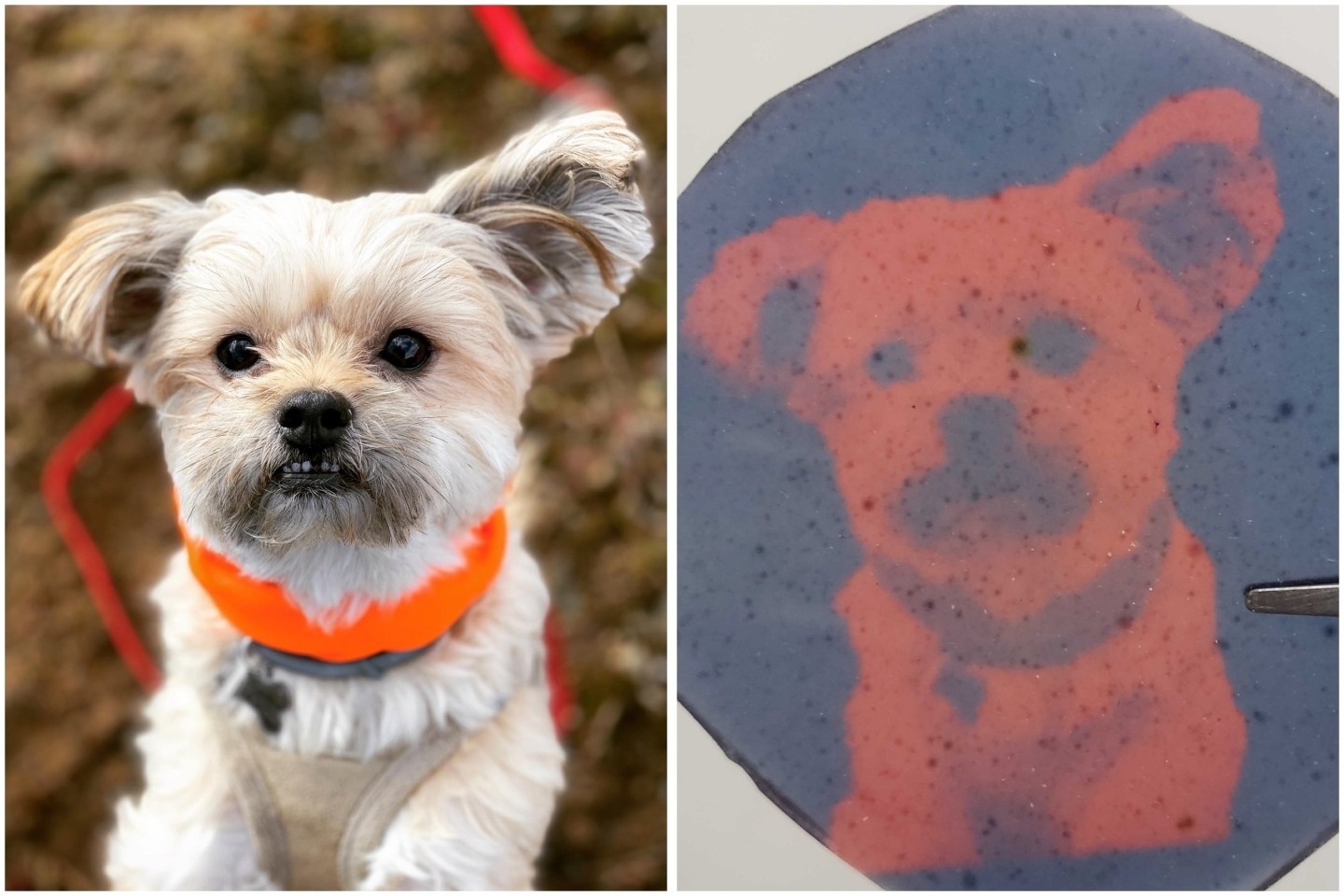Reviewed by Lexie CornerAug 12 2024
New research in the journal Chem describes a new method for physicians to capture 3D images from medical scans and embed them within an acrylic cube, creating a portable replica of a patient's heart, brain, kidneys, or other organs. After use, a brief application of heat would erase the image, allowing the cube to be reused for the next scan. This study was conducted by researchers from Dartmouth and Southern Methodist University.
 A photo of Moby, the Dartmouth lab’s mascot, was projected into a polymer film to create a two-dimensional light engraving. Image Credit: Sara Patch. Engraving by Ivan Aprahamian
A photo of Moby, the Dartmouth lab’s mascot, was projected into a polymer film to create a two-dimensional light engraving. Image Credit: Sara Patch. Engraving by Ivan Aprahamian
The research introduces a technique that uses a specialized light projector to imprint two- and three-dimensional images inside any polymer containing a photosensitive chemical additive developed by the team. The light-based engraving remains in the polymer until heat is applied, which erases the image and restores the material to its original state.
Ivan Aprahamian, Professor and Chair of the Department of Chemistry and Co-Corresponding Author of the paper, explains the method as writing with light and erasing with heat or light. During test trials, the researchers successfully produced high-resolution images in polymers ranging from thin films to those up to six inches thick.
You can take any polymer with optimal optic properties and enhance it with our chemical switch. Now, that polymer is a 3D display.
Ivan Aprahamian, Professor and Chair, Department of Chemistry, Dartmouth and Southern Methodist University
According to Aprahamian, the technology is designed for any situation where precise, detailed visual data in a compact, easily customizable format is essential, such as in architectural design or surgical planning. He also suggests that the tool could be used to create 3D images for educational purposes or even artistic projects.
This is like 3D printing that is reversible. You can take any polymer that has the optimal optic properties—that is, it’s translucent—and enhance it with our chemical switch. Now, that polymer is a 3D display. You do not need virtual reality headsets or complicated instrumentation. All you need is the right piece of plastic and our technology.
Ivan Aprahamian, Professor and Chair, Department of Chemistry, Dartmouth and Southern Methodist University
The study's First Author, Ivan Aprahamian, along with Qingkai Qi, a Postdoctoral Researcher at Dartmouth, developed a light-sensitive chemical "switch" that can be added to common polymers, such as an acrylic cube, to create a display. The switch's optical properties are enhanced by the reaction between azobenzene, a component of the switch, and boron difluoride.
Once combined with a polymer, the switch responds to red and blue light wavelengths emitted by a projector developed in the lab of Alex Lippert, SMU Chemistry Professor and Co-Corresponding Author, and Joshua Plank, a Ph.D. candidate in Lippert's laboratory and co-author of the study. Aprahamian explains that the red light activates the chemical additive to produce the image, functioning like ink, while blue light can then be used to erase it.
Lippert adds that the projector emits various light patterns at different angles to illuminate the treated polymer. Where these patterns intersect, the photosensitive chemical developed by Aprahamian's lab is activated, forming three-dimensional patterns. To create 3D projections from 2D images, such as a chest X-ray, the original image is divided into slices and projected onto a polymer cube or another shape until the slices combine to form the full 3D image.
Future research will focus on refining the process to produce animated images within polymers, a capability the researchers have already demonstrated. Meanwhile, the technology described in Chem may be developed for industrial or healthcare applications, which is already proving useful.
Scaling up requires tuning the chemical switch properties to improve resolution, contrast, and refresh rate. The projector system can, in principle, be scaled up and developed into a turnkey system with automated hardware and associated software for easy use.
Alex Lippert, Professor and Study Co-Corresponding Author, Dartmouth and Southern Methodist University
Journal Reference:
Qi, Q., et al. (2024) A photoswitchable handheld volumetric 3D display. Chem. doi.org/10.1016/j.chempr.2024.07.012